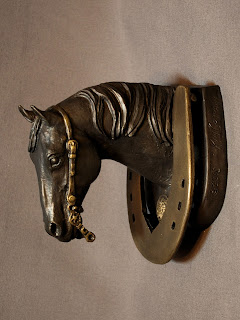 |
| Reining horse bronze horse sculpture - Lady Reiner |
I have been showing reining horses for over 20 years, and yet I still learn more about the balance and movement of a reining horse when I sculpt them.
The best reining horses and riders operate together to the point that the curve of the spine and roll of the pelvis of both horse and rider match in a good sliding stop.
The movement of the reining horse and rider are synchronized to the point that if I see the form in which the rider sits the sliding stop, I can have a pretty darn accurate idea of how hard that rider's horse will be stopping.This also works the other way around. If I can observe the form and body of the
See more of my bronze horse sculptures at:
www.corpany.com










